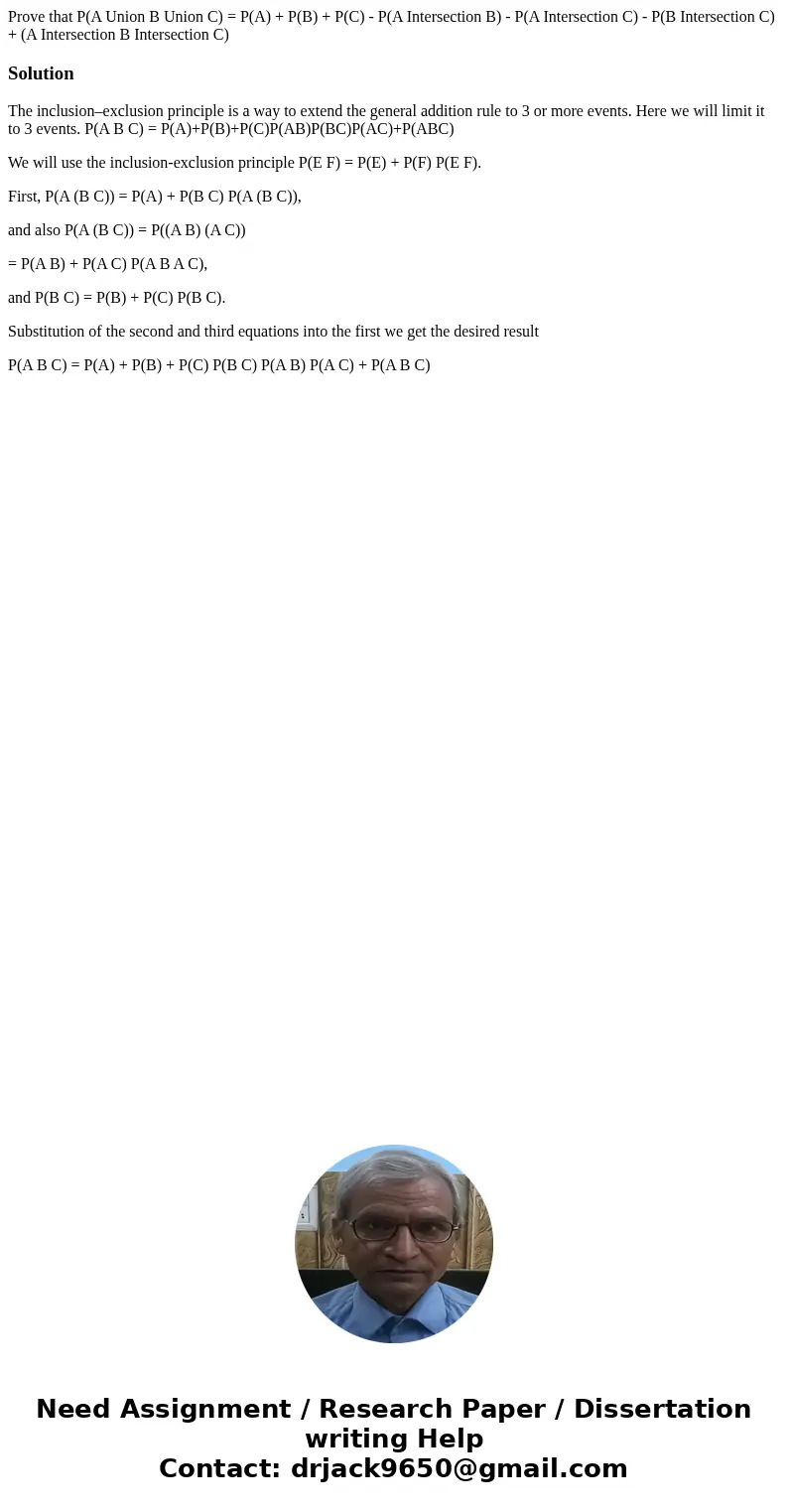Prove that PA Union B Union C PA PB PC PA Intersection B
Prove that P(A Union B Union C) = P(A) + P(B) + P(C) - P(A Intersection B) - P(A Intersection C) - P(B Intersection C) + (A Intersection B Intersection C)
Solution
The inclusion–exclusion principle is a way to extend the general addition rule to 3 or more events. Here we will limit it to 3 events. P(A B C) = P(A)+P(B)+P(C)P(AB)P(BC)P(AC)+P(ABC)
We will use the inclusion-exclusion principle P(E F) = P(E) + P(F) P(E F).
First, P(A (B C)) = P(A) + P(B C) P(A (B C)),
and also P(A (B C)) = P((A B) (A C))
= P(A B) + P(A C) P(A B A C),
and P(B C) = P(B) + P(C) P(B C).
Substitution of the second and third equations into the first we get the desired result
P(A B C) = P(A) + P(B) + P(C) P(B C) P(A B) P(A C) + P(A B C)

 Homework Sourse
Homework Sourse